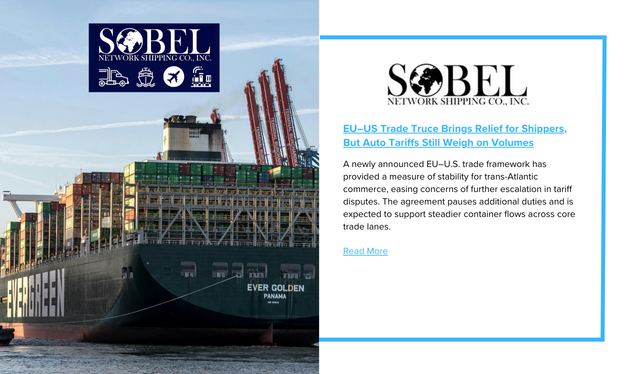A newly announced EU–U.S. trade framework has provided a measure of stability for trans-Atlantic commerce, easing concerns of further escalation in tariff disputes. The agreement pauses additional duties and is expected to support steadier container flows across core trade lanes.
The framework keeps in place the 15% tariff on most European exports and the 27.5% duty on automobiles. These levies will remain until the EU implements reciprocal reductions on a broad range of U.S. industrial and agricultural goods.
For containerized shipping, the move is expected to reduce short-term volatility, particularly for pharmaceuticals, agricultural commodities, and industrial products spared from further escalation. Analysts say this should help normalize flows into major U.S. gateways on the East Coast and Gulf.
However, unchanged auto tariffs remain a drag on westbound volumes. European car exports to the U.S. fell nearly 17% in the first half of 2025 compared with the prior year. Vehicles and parts remain the EU’s most valuable export category to the U.S., totaling $34.9 billion in 2024.
The broader effects on U.S. consumer demand remain uncertain. Higher landed costs for EU goods may shift purchasing toward more affordable domestic or Asian alternatives, with potential volume declines in food, wine, and mid-tier manufactured goods.
Overall container traffic in the first half of 2025 ticked up by 2% year-over-year, but EU-to-U.S. demand was flat as tariffs and currency fluctuations weighed on trade.
Industry observers note that more comprehensive negotiations covering standards, digital regulations, and market access will be needed to deliver long-term growth. In the meantime, carriers are bracing for policy unpredictability, with flexible capacity planning becoming essential to keep services aligned with fluctuating demand.


